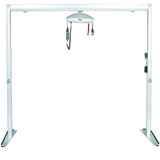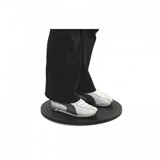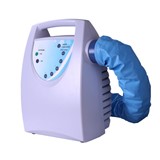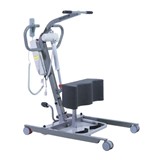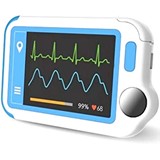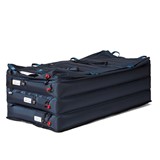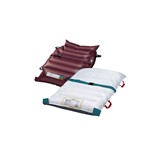In the realm of patient care, ensuring the safety and well-being of individuals during transfers and handling is of paramount importance. A patient hoist, a vital piece of equipment, plays a crucial role in facilitating these movements while minimizing the risk of injuries to both patients and caregivers. To aid healthcare professionals, caregivers, and individuals in making well-informed decisions, this comprehensive buying guide delves into the essential factors to consider when selecting the most suitable patient hoist for safe and efficient patient handling.
I. Importance of Selecting the Right Patient Hoist
- Avoiding injuries: Improper patient handling can lead to musculoskeletal injuries for both patients and caregivers. Enhancing patient comfort: The right hoist can provide a more comfortable and dignified transfer experience for patients with reduced mobility.
- Increasing efficiency: A well-chosen patient hoist can streamline transfers, reducing the time and effort required for caregivers. Ensuring safety: By selecting a hoist that aligns with specific needs, potential risks during transfers can be significantly reduced.
II. Understanding the Different Types of Patient Hoists
When it comes to ensuring safe patient handling, selecting the appropriate type of patient hoist is crucial. Patient hoists come in various forms, each designed to meet specific needs and circumstances. Below, we will delve into the different types of patient hoists available in the market, along with their respective pros and cons.
A. Mobile Patient Hoists:
Mobile patient hoists, also known as portable hoists, are versatile and flexible, making them suitable for various care settings, including hospitals, nursing homes, and private residences. These hoists feature a wheeled base that allows caregivers to move the equipment easily from one location to another, providing greater mobility for patient transfers.Ideal for situations where fixed installations are not feasible or necessary.
Pros:
- Portability offers convenience and adaptability in changing care environments.
- Easy to store when not in use, reducing space requirements.
- Versatile, enabling transfers between different rooms or areas.
Cons:
- May require manual operation, which can be physically demanding for caregivers during frequent transfers.
- Some models might have weight and lifting limitations compared to ceiling-mounted hoists.
B. Ceiling-mounted Patient Hoists:
Ceiling-mounted patient hoists are permanently fixed to the ceiling, providing a secure and space-saving solution. These hoists utilize tracks or gantries that allow smooth and controlled movement of the patient. Often found in healthcare facilities, where patient transfers are frequent and consistent.
Pros:
- Excellent weight capacity, suitable for bariatric patients or those with high support needs.
- Effortless and smooth transfers, as the hoist moves along the ceiling tracks.
- Provides more floor space, making it easier for caregivers to maneuver around the patient.
Cons:
- Requires professional installation, which can involve higher upfront costs.
- Limited mobility as transfers are constrained to the areas covered by the ceiling tracks.
- Impractical for temporary or short-term use.
C. Stand-assist Patient Hoists:
Stand-assist patient hoists are designed for patients with some weight-bearing ability but who may still require assistance in standing up or sitting down.These hoists usually come with a sling that supports the patient in a semi-standing position. Suitable for patients who can actively participate in the transfer process to some extent.
Pros:
- Promotes patient independence and encourages active participation in transfers.
- Reduces the physical strain on caregivers by requiring less manual lifting.
- Offers a safer alternative to manual lifting for both patients and caregivers.
Cons:
- Not suitable for patients with limited weight-bearing capabilities or those who cannot actively participate in transfers.
- Requires proper assessment to ensure the patient's ability to use the stand-assist function safely.
- May have lower weight capacity compared to other hoist types.
D. Sit-to-Stand Patient Hoists:
Sit-to-stand patient hoists are specifically designed to assist patients in transitioning from a sitting to a standing position and vice versa. These hoists often feature a knee pad or seat that provides support to the patient while standing. Suitable for patients who have some upper body strength and can bear weight on their legs.
Pros:
- Facilitates safe and controlled transfers for patients with limited mobility.
- Reduces the risk of falls during standing transfers.
- Promotes patient confidence and independence in mobility.
Cons:
- Not suitable for patients with severe mobility impairments or complete weight-bearing restrictions.
- Caregivers need to ensure proper positioning and support during the transfer process.
- May require additional accessories or modifications for specific patient needs.
E. Pros and Cons of Each Type:
Each type of patient hoist offers unique advantages and considerations based on the patient's needs and the care environment.Choosing the right hoist involves a careful assessment of the patient's physical abilities, the frequency of transfers, and the available space.It is essential to involve occupational therapists or healthcare professionals in the decision-making process to ensure the best fit for the patient's requirements.
III. Assessing the Needs of Patients and Caregivers
When selecting a patient hoist, it is crucial to thoroughly assess the needs of both the patients and the caregivers involved. By understanding their specific requirements, you can make an informed decision and choose the most suitable hoist for safe and effective patient handling. In this section, we will delve into the key considerations related to patient requirements, caregiver preferences, and the importance of identifying specific use cases. Additionally, we will highlight the significance of involving occupational therapists in the decision-making process.
A. Patient Requirements (Weight, Mobility, Medical Condition)
- Patient Weight: Determine the weight of the individuals who will be using the hoist. Different hoists have varying weight capacity limits, and exceeding these limits can compromise safety.
- Mobility Level: Consider the patient's mobility and ability to participate actively in the transfer process. Some hoists are designed for fully dependent patients, while others accommodate those with partial mobility.
- Medical Condition: Take into account the patient's medical condition and any specific challenges they may face during transfers. Certain conditions, such as fractures or pressure ulcers, may require special features in the hoist to ensure comfort and prevent exacerbation of existing issues.
B. Caregiver Preferences and Physical Capabilities
- Caregiver Strength and Size: Assess the physical capabilities of the caregivers who will be operating the hoist. This includes their strength and ability to handle the hoisting process comfortably.
- Training and Familiarity: Consider the level of experience and training the caregivers have with patient hoists. If caregivers are already familiar with a specific type of hoist, it may be advantageous to select a similar model to maintain consistency.
C. Identifying Specific Use Cases
- Transfer Scenarios: Identify the different transfer scenarios that the hoist will be used for (e.g., bed to wheelchair, wheelchair to toilet). Each scenario may require a hoist with specific features or accessories to ensure smooth and safe transfers.
- Frequency of Use: Determine how frequently the hoist will be used. For high-frequency usage, durability and ease of maintenance become crucial factors.
D. Importance of Involving Occupational Therapists
- Expert Assessment: Occupational therapists play a critical role in evaluating the unique needs of patients and their abilities. Their expertise can help match the right hoist to individual requirements.
- Recommendations: Occupational therapists can provide valuable insights and recommend specific hoist models based on their experience and knowledge of the patient's condition.
- Training and Education: Involving occupational therapists in the selection process ensures that caregivers receive proper training on using the hoist safely and effectively.
By thoroughly assessing the needs of patients and caregivers and considering specific use cases, you can narrow down the options and make an informed choice when purchasing a patient hoist
IV. Weight Capacity and Lifting Range Considerations
A. Determining the Appropriate Weight Capacity
The weight capacity of a patient hoist is one of the most crucial factors to consider when selecting the right hoist for safe patient handling. It directly affects the safety and effectiveness of the lifting process. To determine the appropriate weight capacity, several key points should be taken into account:
- Patient's Weight: Obtain an accurate measurement of the heaviest patient who will be using the hoist. This includes accounting for any potential weight fluctuations due to medical conditions or treatment.
- Additional Loads: Consider any additional weight that might be added to the hoist during transfers. This could include the weight of slings, clothing, or medical equipment.
- Future Needs: Anticipate future requirements by selecting a hoist with a weight capacity that accommodates potential changes in the patient's condition or care needs.
- Bariatric Patients: If there's a possibility of handling bariatric patients, special consideration must be given to their weight, and a bariatric-rated hoist may be necessary (Refer to section C for more details on bariatric hoists).
B. Understanding Different Lifting Ranges
The lifting range refers to the distance between the lowest and highest points the hoist can lift the patient. Understanding the lifting range is essential to ensure that the hoist can comfortably and safely transfer the patient in various situations. Consider the following aspects:
- Vertical Lifting Range: This is the primary factor to assess in the lifting range. It determines how high the hoist can lift the patient off the ground. Ensure that the lifting range is suitable for the specific transfer tasks required in your setting.
- Clearance and Obstructions: Take into account any potential obstacles or overhead structures that might restrict the hoist's lifting range. This is particularly important for ceiling-mounted hoists.
- Lowest Position: Check the minimum height the hoist can lower the patient to the ground. It should be low enough to facilitate easy transfers from beds, wheelchairs, or other surfaces.
- Highest Position: Evaluate the maximum height the hoist can achieve, considering any potential transfers to elevated surfaces or medical equipment.
C. Bariatric Patient Hoists: Special Considerations
Patients with obesity or higher body mass require specialized equipment to ensure their safety and dignity during transfers. Bariatric patient hoists are designed to accommodate higher weight capacities and address the specific needs of bariatric patients. Some key considerations include:
- Higher Weight Capacities: Bariatric hoists are built to handle significantly higher weight capacities than standard patient hoists, typically ranging from 600 lbs to over 1000 lbs (270 kg to 450 kg).
- Wider Slings: Bariatric hoists come with wider slings that provide better support and comfort for larger patients during transfers.
- Sturdier Construction: These hoists are constructed with reinforced materials to ensure stability and safety while lifting heavier patients.
- Accessibility Features: Bariatric hoists may include additional features, such as extra-wide base legs or powered positioning options, to facilitate transfers for both patients and caregivers.
V. Examining Hoist Features for Comfort, Safety, and Stability
A. Types of Slings and Their Applications:
- Full Body Slings: Designed to support the entire body, suitable for patients with limited mobility or those who require full lifting assistance.
- Commode Slings: Equipped with an opening for easy toileting, ideal for patients who cannot bear weight on their legs or have bathroom needs during transfers.
- Standing Slings: Intended for patients who have some weight-bearing ability, facilitating sit-to-stand transfers and gait training.
- Hammock Slings: Provide a comfortable and supportive lying position, suitable for extended periods of transfer or patient repositioning.
B. Safety Features:
- Emergency Stop: A crucial safety mechanism allowing caregivers to halt hoist movement instantly in case of an emergency or potential hazard.
- Overload Protection: Prevents the hoist from lifting loads beyond its designated weight capacity, ensuring safe operation and avoiding equipment damage.
- Lowering Mechanism: Enables a smooth and controlled descent, reducing the risk of sudden drops during patient lowering.
- Slack Strap Sensor: Alerts caregivers if the sling has excess slack, prompting adjustments to enhance patient safety during transfers.
- Audible Alarms: Notifies users of specific hoist actions, such as lifting or lowering, to keep both the patient and caregivers informed throughout the process.
C. Comfort Features for Patients:
- Padded Slings: Extra cushioning on the sling surface enhances patient comfort, minimizing pressure points and reducing the risk of skin irritation.
- Ergonomic Design: Hoists with ergonomic features ensure optimal positioning and support for patients, promoting better comfort during transfers.
- Adjustable Straps: Enable customization to fit the patient's body shape and size, providing a snug and secure transfer experience.
- Fabric Options: Hoist slings are available in various materials, including mesh and soft fabrics, catering to individual preferences and needs.
D. Stability and Balance during Lifting and Transfers:
- Base Width and Design: Wider bases offer better stability, especially during transfers involving heavier patients or those with limited mobility.
- Lockable Wheels: Hoists equipped with lockable wheels provide stability during transfers and immobilize the hoist when needed for added safety.
- Swivel Casters: Enable smooth maneuverability, allowing caregivers to navigate around obstacles and provide efficient transfers without straining.
VI. Considering the Environment and Space Constraints
A. Assessing the Physical Environment for Installation:
Before acquiring a patient hoist, it is crucial to conduct a thorough assessment of the physical environment where the hoist will be installed. Consider the following factors:
- Ceiling Structure: For ceiling-mounted hoists, ensure that the ceiling structure is strong enough to support the weight of the hoist and the patient during transfers. Consult with a structural engineer if needed.
- Floor Surface: Evaluate the floor surface for smoothness and stability to facilitate the movement of mobile hoists.
- Obstacles and Clearance: Identify potential obstacles in the hoist's path, such as furniture, doorways, or medical equipment. Measure the clearance space required for safe and unhindered transfers.
B. Space Considerations in Different Settings (Hospitals, Homes, Nursing Facilities):
The available space varies depending on the setting, and it is essential to choose a hoist that fits the specific environment:
- Hospitals: In hospital settings, space is often optimized for patient care. Ceiling-mounted hoists may be preferred in rooms with sufficient structural support, while mobile hoists can offer flexibility for use in different areas.
- Homes: Home environments may have limited space, especially in bedrooms and bathrooms. Stand-assist or sit-to-stand hoists are suitable options when floor space is restricted.
- Nursing Facilities: Nursing homes and care facilities may require a combination of ceiling-mounted and mobile hoists, considering the diverse needs of the residents.
C. Portable Hoists for Travel and Temporary Use:
In some situations, portable patient hoists are necessary for travel or temporary use:
- Travel: For patients who require assistance during trips or vacations, portable hoists offer the convenience of mobility. Look for lightweight and easily collapsible designs for easy transportation.
- Temporary Use: In cases where a patient's mobility is temporarily impaired, portable hoists can be a practical solution without the need for permanent installation.
Remember that considering the environment and space constraints is paramount in ensuring the safety and efficacy of the patient hoist. Proper assessment allows for the appropriate selection of the hoist type and model, promoting seamless patient transfers while minimizing the risk of accidents or damage to the surroundings.
VII. Budgeting and Cost Analysis for Patient Hoist Purchase
A. Understanding the Cost Factors
- Patient Hoist Type: Different types of patient hoists come with varying price ranges. Mobile hoists are generally more affordable than ceiling-mounted hoists, which tend to be costlier due to installation requirements.
- Weight Capacity: The hoist's weight capacity can impact its cost. Higher weight capacity hoists designed for bariatric patients might be more expensive than standard models.
- Features and Accessories: Additional features such as powered movement, advanced sling options, and specialized controls can increase the overall cost of the hoist.
- Brand and Reputation: Established and reputable brands may have higher-priced models, but they often come with enhanced reliability and customer support.
B. Balancing Cost and Quality
- Avoiding Cheap and Substandard Hoists: While it's essential to be budget-conscious, opting for extremely cheap hoists from unknown brands might compromise safety and durability.
- Prioritizing Safety and Compliance: Ensure that the hoist meets safety standards and is compliant with regulations to protect both patients and caregivers.
- Considering Long-term Cost Savings: Investing in a high-quality, durable hoist might have higher upfront costs but can lead to long-term savings through reduced maintenance and repairs.
C. Long-term Cost Considerations (Maintenance, Repairs, etc.)
- Warranty Coverage: Check the warranty offered by the manufacturer and understand what it covers, including parts and labor. Longer warranty periods can provide added peace of mind.
- Maintenance Requirements: Inquire about the maintenance needs of the hoist and any associated costs. Regular maintenance can extend the life of the hoist and prevent unexpected breakdowns.
- Availability of Spare Parts: Ensure that the hoist's manufacturer provides easy access to spare parts for repairs, preventing prolonged downtime in case of any issues.
- Service and Support: Research the manufacturer's reputation for customer service and support. Responsive and knowledgeable support can be invaluable in case of technical problems
VIII. Evaluating Brands and Models of Patient Hoists
A. Researching Reputable Brands
- Industry Experience: Look for brands with a proven track record of manufacturing patient hoists and providing reliable mobility solutions.
- Customer Reviews: Read reviews and testimonials from other healthcare facilities or individuals who have used hoists from the brand to gauge customer satisfaction.
- Certifications and Standards: Check if the brand's hoists meet relevant safety and quality standards set by regulatory bodies.
B. Identifying Models with Positive User Feedback
- Online Reviews: Explore online platforms and forums where users share their experiences with specific patient hoist models. Pay attention to common praises and criticisms.
- Recommendations from Peers: Seek recommendations from other healthcare professionals or caregivers who have hands-on experience with patient hoists.
C. Seeking Expert Recommendations and Reviews
- Consult with Occupational Therapists: Occupational therapists can provide valuable insights into selecting a patient hoist that suits specific patient needs and caregiver capabilities.
- Reaching Out to Industry Experts: Contact industry experts or mobility specialists who have in-depth knowledge of various patient hoist models and can offer unbiased advice.
In conclusion, choosing the right patient hoist is a critical decision that directly impacts patient safety, caregiver efficiency, and overall quality of care. By considering the specific needs of patients and caregivers, assessing the environment, evaluating features and costs, and researching reputable brands and models, healthcare professionals and caregivers can make informed choices that ensure safe and effective patient handling.



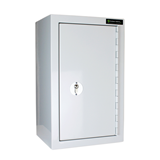
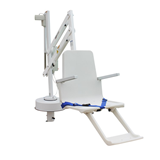
-160x160-state_article-rel-cat.png)
